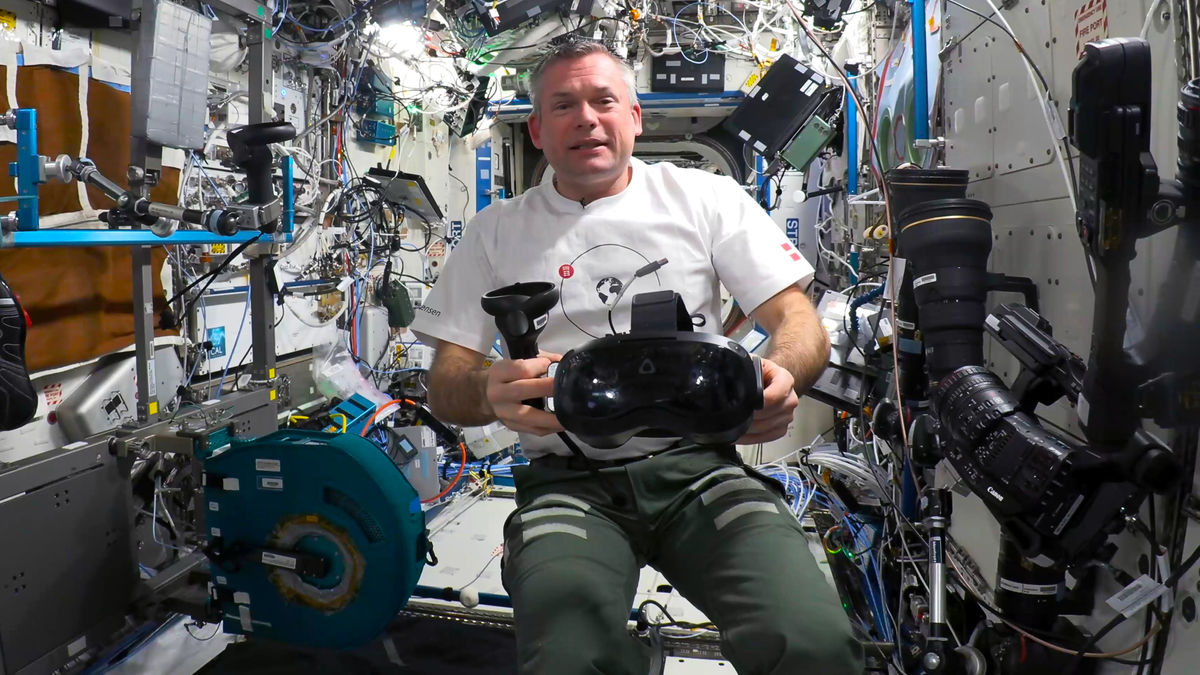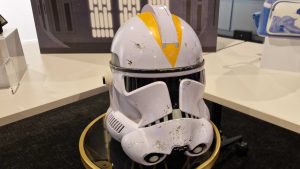The Vive Focus 3 On The International Space Station Is Now Being Used For Exercise Too


The VR headset on the International Space Station is now being used for exercise, in addition to its previous role for mental health.
In November HTC sent a Vive Focus 3 to the ISS on a SpaceX Cargo Dragon autonomous spacecraft launched to bring supplies and experiments to the station as part of NASA’s Commercial Resupply Services program.
Vive Focus 3 is HTC’s $1300 business-focused standalone headset, which it released in 2021. It uses the same Snapdragon XR2 Gen 1 chipset as Quest 2 but with significantly higher resolution 2.5K displays, higher resolution than even today’s Quest 3 or Pico 4. While HTC released the newer Vive XR Elite headset last year, Focus 3 remains its primary pitch for businesses.
0:00
The headset is being used by European Space Agency astronaut Andreas Mogensen, who has been on the ISS since August and will soon return to Earth.
Part 1 of the experiment was to test how VR can help with astronaut mental health via 360-degree videos of scenes on Earth like sunsets, swimming with dolphins, and scenic views.
Recently HTC enabled Part 2 of the experiment, using VR for physical fitness. The reduced gravity environment of space causes muscle atrophy and bone density loss, and regular exercise helps mitigate these effects. This is why astronauts typically exercise for at least two hours per day. But the environment of the ISS can be “sterile and cold”, Mogensen says, and this is where VR comes in.
The Vive Focus 3 is synced up to the smart exercise bike on the ISS via Bluetooth. Mogensen sees a 270-degree first-person video of a cyclist on a scenic route from his home country Denmark, which plays back at the speed he’s cycling. A metadata track on the video changes the resistance setting of the exercise bike to match the surface and gradient of the track, so Mogensen feels like he’s cycling it.
Here’s some of what Mogensen had to say about using VR on the ISS:
“We astronauts onboard the space station are living in a very confined artificial laboratory-like environment. It’s very sterile, it’s very cold, and we don’t have access to nature. And that affects our psychological wellbeing.”
“I have to be honest, I didn’t actually expect it would make much of a difference, but I found that I love wearing this headset. It takes me into nature. It makes me feel like I’m out in nature. That I’m outside of the space station, away from this artificial environment. And it really de-stresses me. It makes me relax. It takes away a lot of the daily stress, and just allows me to re energize. To catch my breath, to feel like I’m back on the earth. It’s a really great way to get away from this artificial environment.”
“One of my favorite things to do on board the space station is to cycle while wearing the virtual reality headset.”
Tracking System Adaptation
Getting tracking to work on a space station was a major undertaking though. On Earth headsets use the accelerometer in their IMU (inertial measurement unit) to measure the gravity vector to determine to the orientation of the ground, but trying to use this in space would cause constant drifting. To solve this HTC has modified the tracking system to track one of the controllers fixed onto a wall as an anchor point, so the headset has a fixed point to align its movement to.
And this isn’t the first time a headset has been sent to the ISS, nor that the tracking needed to be adapted.
All the way back in 2015, Microsoft sent an original Hololens AR headset to the ISS with a Remote Expert Mode so ground crews could help astronauts with repairs and a Procedure Mode that overlayed equipment tutorials for novel systems. Like HTC, Microsoft had to modify the device’s tracking system to work in microgravity.
In 2017 Oculus sent a Rift VR headset to the International Space Station and ESA astronauts Thomas Pesquet and Alexander Gerst used it for microgravity neuroscience experiments. Oculus swapped out the Rift’s built-in tracking system for a third party solution better suited to be customized for microgravity.
VR Could Be Essential For Deep Space Missions
With NASA’s Artemis program aiming to establish a permanent base on the moon in the 2030s and eventually send humans to Mars, VR could become a vital tool to help astronauts escape and relax or exercise on these long-duration missions in deep space. As well as immersive environments that simulate being back on Earth, astronauts could use headsets as personal theatres to enjoy traditional media on a much larger virtual screen than the tiny screens they could take with them.
While HTC’s experiment is only 360 videos for now, it could set a precedent for continued astronaut use of VR for both mental and physical health.




